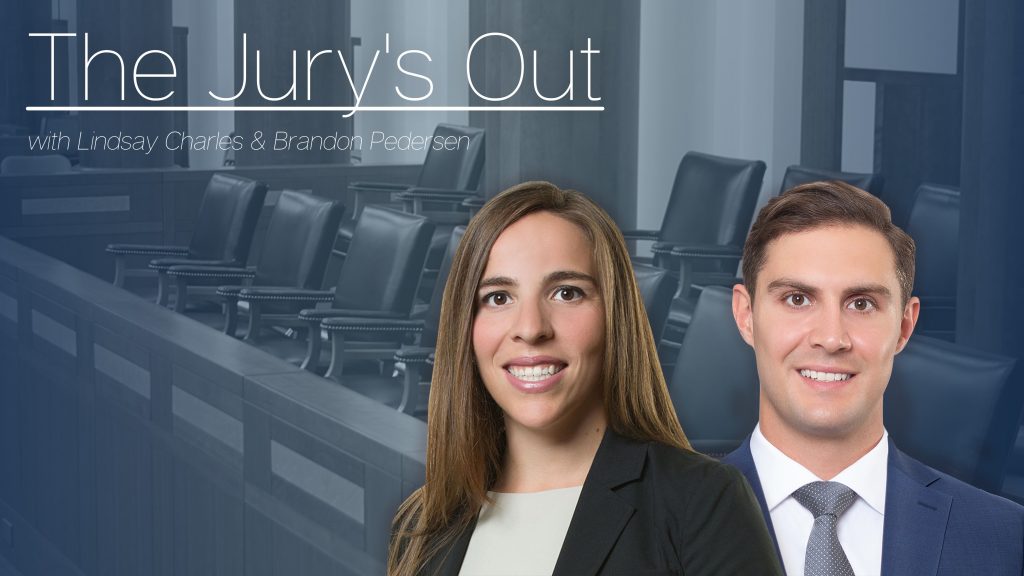Written By: Lindsay Charles and Brandon Pedersen, Student-at-Law
Ontario is in the midst of a third wave of the COVID-19 pandemic. The Ontario government declared a third state of emergency on April 7, 2021, followed by a province-wide Stay-at-Home order and stricter lockdown measures.
As an essential service, courts remain open; however, only the most serious matters (child protection, urgent family, and critical criminal) are to be held in-person. Jury trials remain suspended.
Miller v. Panahi, 2021 ONSC 2693 is the latest decision out of Barrie where a plaintiff was successful in striking the defendant’s jury notice.
Background
The plaintiff was injured in a June 2017 motor vehicle collision in which he was struck while driving his motorcycle. The action was commenced by way of statement of claim in December 2017 and all intermediate procedural steps were concluded by October 2018. The plaintiff delivered a trial record in October 2018 and a pre-trial was held in September 2019. The action was placed on the May 2020 sittings, but jury trials were suspended in 2020 with COVID-19 looming large.
Positions of the Parties
The plaintiff submitted that this action could be five years or older by the time it is heard if it were to proceed by way of jury. This, the plaintiff argued, was a real and substantial prejudice inherent in waiting for a jury trial. The plaintiff also submitted that:
- The cost of obtaining nine updated expert reports would be expensive;
- Funding for treatment had depleted;
- Being unable to work, his future income loss is converted to past income loss, which is subject to a 30% reduction pursuant to ss. 5(1)2 and 267.5(1)3 of the Insurance Act, R.S.O. 1990, c. I.8. Therefore each passing day continues to erode his claim for loss of income;
The defendant submitted that there was no evidence that striking the jury will advance the trial date and it would be inappropriate to interfere with the substantive right to a trial by jury. The defendant had prepared its case to challenge the plaintiff`s credibility before a panel of jurors. The “wait and see approach” would be most appropriate at this stage, given the increased vaccination rollouts and reduction in public health risks which should curtail the COVID-19 crisis and allow for jury trials by the end of 2021.
Disposition
The Court reviewed the prevailing authorities on striking a jury in stating:
[23] The right to a jury trial is a substantive one that has long been recognized. A party moving to strike a jury notice bears the onus of showing that there are features in the legal or factual issues to be resolved, in the evidence, or in the conduct of the trial which merit the discharge of the jury. In the end, a court must decide whether the moving party has shown that justice to the parties will be better served by the discharge of the jury: Cowles v. Balac, (2006) 2006 CanLII 34916 (ON CA), 83 O.R. (3d) 660 (C.A.), at para. 37.
[24] Judges considering motions to strike have broad discretion to determine how the trial will proceed: Cowles, at para. 38.
…
[26] In Louis v. Poitras, 2021 ONCA 49, the Court of Appeal provided guidance to judges hearing motions to strike jury notices. In particular, at para. 3, the panel found that there is no “one size fits all” provincial solution as to when jury notices should be struck:
[l]ocal conditions will necessarily impact the choice of effective solutions. However, what must remain consistent across the province is that motion and trial judges have the discretion to respond to local conditions to ensure the timely delivery of justice.
In ruling to strike the jury notice, the Court held:
[30] There may once have been cause for the optimism advanced by the defendant, but no longer. COVID-19 continues to fester and mutate, killing some unfortunate enough to contract the virus or its variants. Matters go from bad to worse in a matter of days. For example, just two days ago, when I released Treiers v. Kmith, 2021 ONSC 2605, the province was subject to an “emergency brake.” Less than 48 hours later the province was placed in a full lockdown.
…
[35] The right to a jury trial is not sacrosanct. As the Court of Appeal held in Girao v. Cunningham, 2020 ONCA 260, 2 C.C.L.I. (6th) 15, at para. 171:
While I recognize that the right to a jury trial in a civil action has been recognized as fundamental, it is not absolute and must sometimes yield to practicality.
[36] The practical reality in Central East is that the plaintiff faces a wait of at least one year, and possibly two, if the jury notice is not struck. Conversely, if the jury notice is struck, his matter can be tried appreciably sooner than 2022.






